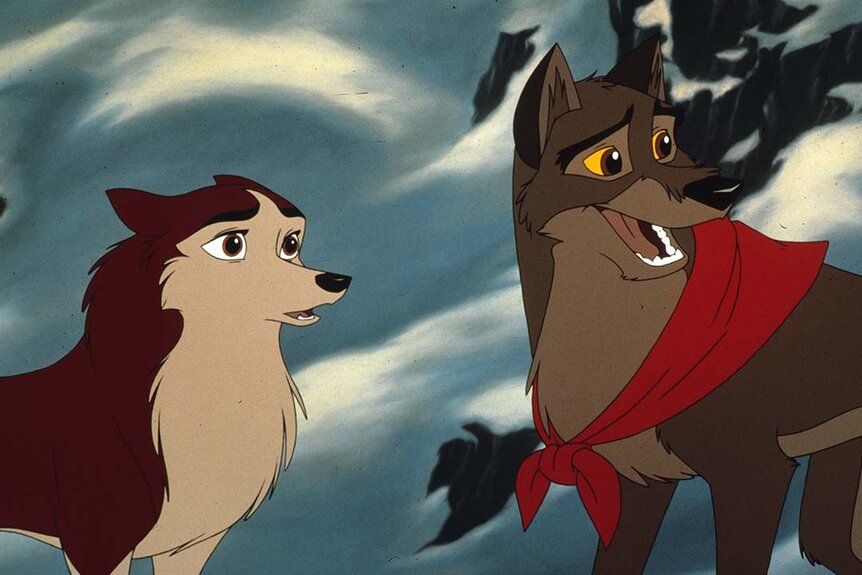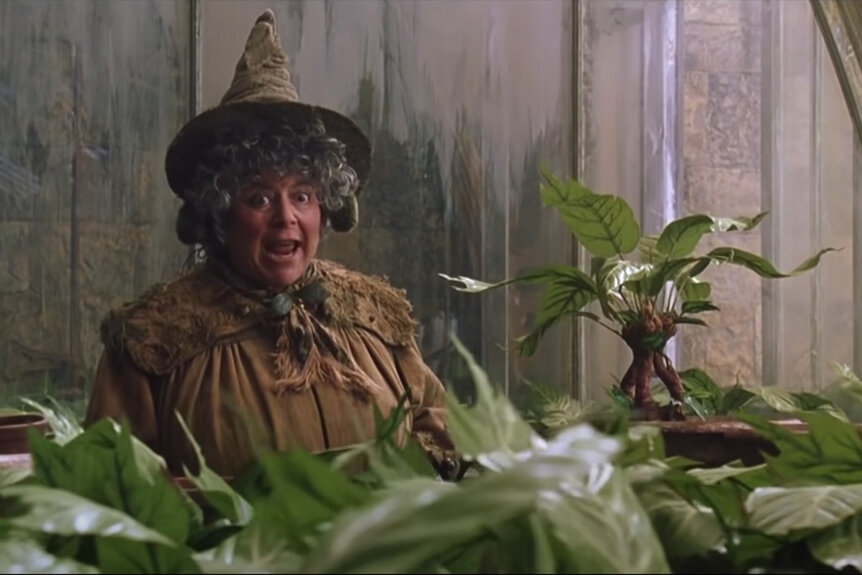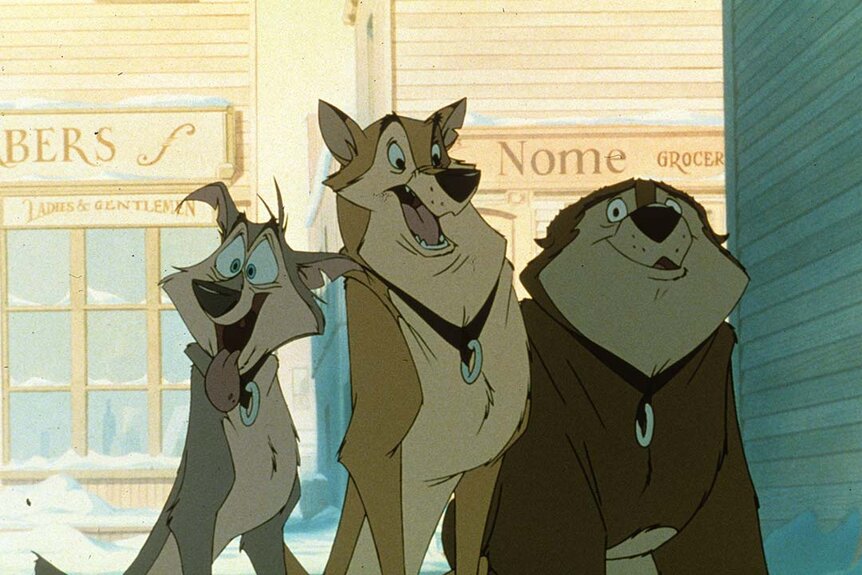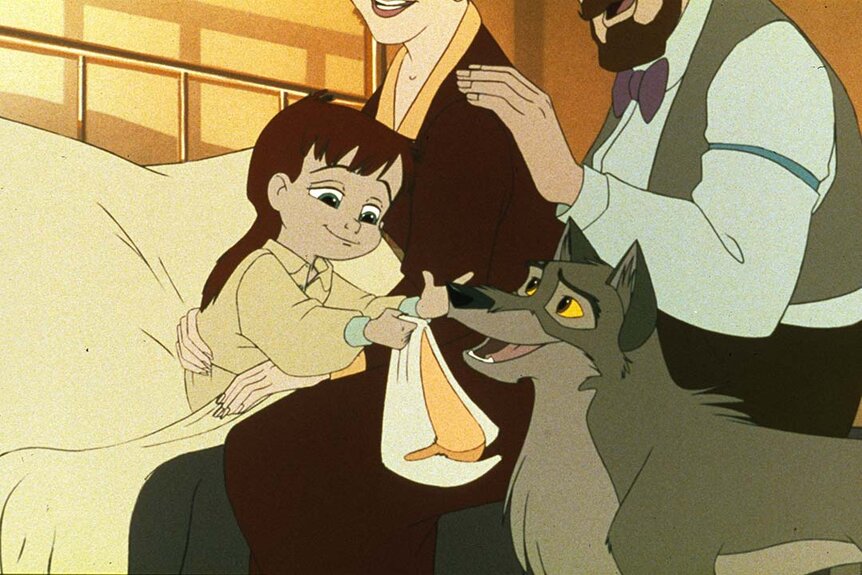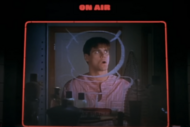Create a free profile to get unlimited access to exclusive videos, sweepstakes, and more!
Balto Director Remembers "Underdog Story" That Ended Era of Spielberg-Produced Animation
Who else grew up watching this canine classic on VHS?
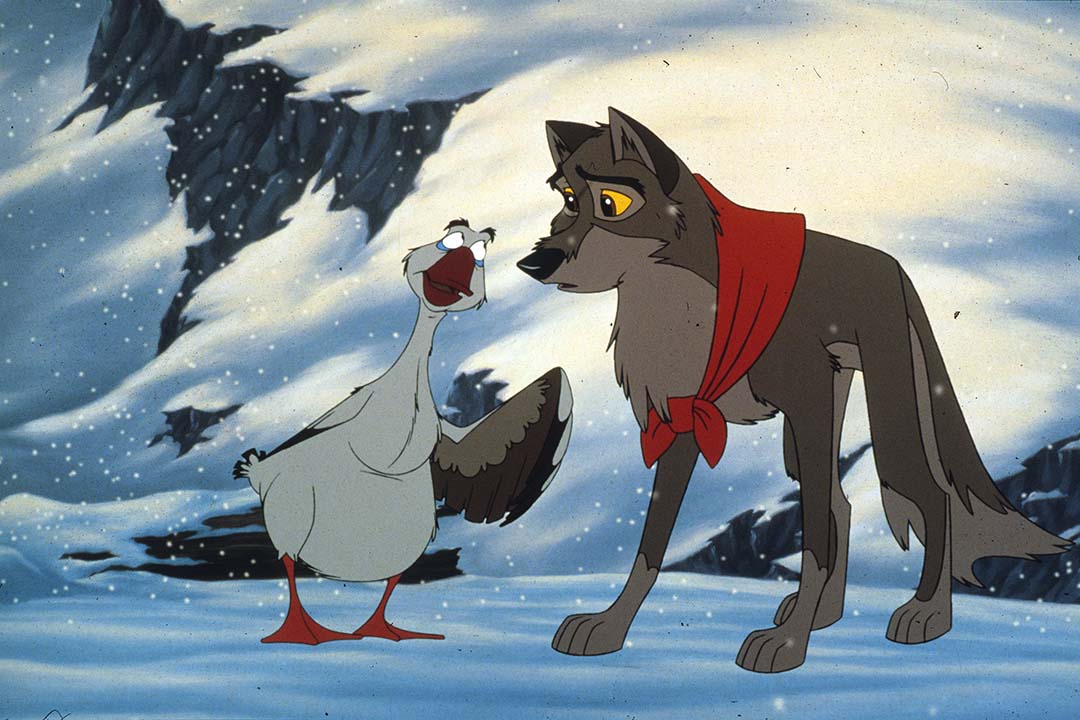
You've probably heard of the famous Iditarod sled dog race that takes place in Alaska each year, but did you know about the brave canine who helped inspire it? Like most people, animator Simon Wells was not aware of Balto's story when he began production on a movie inspired by the Husky who became emblematic of a 1925 campaign to deliver medicine to the sick children of Nome.
While over 20 teams took part in the relay from Nenana, it was the contingent led by Balto and musher Gunner Kaassen that closed out the perilous journey in below-freezing temperatures. "It just struck us as, ‘Yeah, that's gonna be a really good idea for an animated feature.' It’s exciting, adventurous — a literal underdog story," Wells tells SYFY WIRE over Zoom.
RELATED: The E.T. Easter Egg You Probably Missed in Animated Classic Balto
Now streaming on Peacock, 1995's Balto underscores the "literal underdog" element by turning its titular hero (voiced by Kevin Bacon) into a half Siberian Husky, half wolf mutt shunned by the premiere team of sled dogs led by the vainglorious Steele (Jim Cummings).
Why Steven Spielberg was skeptical about 1995's Balto
Ironically, it was executive producer Steven Spielberg, under whose short-lived Amblimation banner the film was made, who voiced notable skepticism over the project. "Spielberg's reaction was, ‘I don't understand how this is going to look any good. It's just going to be a bunch of dogs in snow,'" Wells remembers. "For someone as profoundly visual as Spielberg is, I was kind of astonished that he couldn't see what the possibilities were going to be."
The legendary filmmaker eventually reversed his position after peeping the work of production designer Hans Bacher, who created "a whole series of these absolutely beautiful, little card paintings," Wells adds. "By the end of it, he must have had about 60 of these panels that were the color score of the whole movie, which actually helped convert Spielberg."
RELATED: Meet Dogxim, the World’s First Confirmed Dog-Fox Hybrid
Wells continues: "I got a letter from him at the end of it where he said, ‘Every frame of this movie is an oil painting, it's fantastic.’ [That was] literally [the case]. We discovered that the backgrounds, when painted in oil paints, actually had more of a luminous quality. The snow looked better painted in oil paints than it did painted in watercolor."
Wells wasn't able to visit Alaska, but he did make a trip to Lapland to film real sled dogs for reference material. "People always talk about, ‘Oh, it's very cruel. You've got these dogs running through the snow and pulling these heavy sleds.’ It's quite the opposite, the dogs are desperate to do it," the filmmaker explains. "I don't think I'm just projecting this — the sort of severe disappointment on the faces of the dogs that didn't get taken out and allowed to run was really palpable."
Who stars in Balto?
The voice cast for Balto contains an embarrassment of talent: Kevin Bacon (Balto), Bridget Fonda (Jenna), Jim Cummings (Steele), Bob Hoskins (Boris), and even the great Phil Collins (Muk and Luk). "Basically, you pick your dream [actors] and see if you can get them," Wells says. What's interesting, however, is that Bacon, Cummings, and Fonda were all hired after the movie was already finished. "I appreciate that in terms of marketing the movie, having some big, marquee names helped a great deal," Wells adds.
Balto, for instance, was initially portrayed by Kevin Anderson of Sleeping with the Enemy Fame. "He was kind of a hot actor at the time and we recorded with him, and all the animation was done to his recording," Wells remembers. "And then at the end of it, Universal said, ‘Yeah… we’d like a bigger name. We'd like to bring Kevin Bacon in.’ So Kevin Bacon did a couple of days of just going through, replacing the dialogue. I felt for him because he said, ‘Look, there's only so much I can do because I've got to fit the animation.’ But he did a terrific job and was really enthusiastic."
RELATED: Why The First John Wick Movie Spent Around $5,000 On CGI Dog Poop
Steele, on the other hand, was originally voiced by an up-and-coming Brendan Fraser. "My idea of Steele was that he was basically the quarterback of the football team," Wells reveals. "He was the god because everybody said he was a god. I liked Brendan, because he had that kind of quality in his voice."
In the end, Spielberg requested a different performance, feeling that Fraser's didn't contain enough malevolence. "It really comes down to Spielberg’s vision of making it clearly a villain, [whereas I saw] Steele as being a bit more nuanced; as the kid who misunderstands his role in the world and suffers from jealousy and anger issues," the director elaborates. "But I take the point that Steele is an uncompromising and clear villain the way it came out."
As for Hoskins, he was always meant to voice Balto's Russian goose pal, Boris. "He was just fantastic. Very authentic, very energetic, somewhat frightening. At one point he was struggling with the accent, exploded, and said, ‘What is going on?! I used to have a career! Now I’m playing a goose!'"
Collins, meanwhile, landed the dual role of two hydrophobic polar bears simply by asking: "[He] actually said, ‘Look, I'd like to do a voice in an animated movie.’ And so, we said, ‘Are you kidding?! Of course you can do a voice in an animated movie! Which part would you like?’ We sent him a script and he tried out a few things and eventually figured [he was a good fit for] Muk and Luk. He was so charming, that we wanted to have him do that."
How Balto created its live-action segments
The film is bookended by two live-action segments featuring a grandmother (Miriam Margolyes) and her young granddaughter (Lola Bates-Campbell) visiting the Balto statue in Central Park along with their own pup. Those two scenes were shot on location in New York City over a period of one or two days.
"It’s amazing how callous New Yorkers are. You try and shut down the area, you've got PAs standing on the walkways," Wells says. "And there are people who just say, ‘Nope! Screw you! I have to get to work!’ They just march straight on through regardless ... It was a trial by fire getting that stuff done."
RELATED: 'John Wick' director says first movie's puppy death was written out of the script several times
The one bright spot was getting to work with Margolyes, who was "great fun and kind of outrageous," Wells recalls. "She has a mouth like a sailor and no filters about what she'll talk about and the things that she'll say. Except she was great with the little kid. She was so engaging and really sweet and friendly. Just being the grandma for this little girl. I said to her, ‘You’re great with kids!’ And she said, ‘Can I tell you a secret? I loathe them.’"
In the final moments, we learn that the grandmother was one of the sick children saved by Balto all those decades before. "It really set up the movie and tied it off [nicely]," the director adds. "I love that moment ... when the audience realizes that Miriam Margolyes was Rosie. When the little girl says, ‘Grandma, Rosie!’ and everyone just [gasps]. It’s a wonderful moment."
How Balto closed out the era of Spielberg-produced animation
Balto was the third and final movie to be released by Spielberg's London-based Amblimation after An American Tail: Fievel Goes West (1991) and We're Back! A Dinosaur's Story (1993). The studio officially went defunct in 1997, with a number of its employees moving over to the newly-founded DreamWorks, whose first animated release — The Prince of Egypt — was co-directed by Wells.
Despite the fact that DreamWorks co-founder Jeffrey Katzenberg had been able to recruit a number of veteran animators from Disney, it was the Amblimation team who ended up making the biggest impression. "The organization and the professionalism was absolutely up there," Wells adds. "It was people from Disney who ended up telling Jeffrey Katzenberg, ‘No, these guys are actually fully professional and absolutely of the caliber that anyone from Disney would be.’"
RELATED: Decoding the mutant dogs of Chernobyl’s exclusion zone
Wells credits the Amblimation team's talents to the fact that they were overly ambitious up-and-comers who had gotten used to crafting quality material on exponentially smaller budgets and timelines. "It was a movie made by a whole bunch of young and very enthusiastic artists who kind of didn't know any better," Wells says of Balto. "We didn't know we couldn't do this. I think for all the budgetary limitations, I'm very proud of the way the movie ended up looking."
The enduring legacy of Balto and why it still resonates
Released on December 22, 1995, Balto proved to be a major box office misfire, bringing in a little over $11 million against a budget of $31 million. It probably didn't help that Pixar had completely upended the animation game a month earlier with Toy Story.
"I was slightly disappointed in Balto’s lack of success, but I’m not sure how much marketing had gone into it," Wells admits. "I wasn't terribly keyed into how marketing worked in those days. It's a bit of a difficult sell. It’s like, ‘Why should I take my kids to see this picture about dogs in the snow?'"
Much like the titular canine at the heart of its story, however, the film persevered against insurmountable odds, counterbalancing a subdued box office gross with impressive home video sales. This led to a pair of direct-to-video sequels — Balto II: Wolf Quest (2002) and Balto III: Wings of Change (2005) — both of which were made without the involvement of Wells and the original cast.
RELATED: Despite the challenge of on-set animal wrangling, 'Strays' director says he wanted 'the real thing'
The director didn't fully comprehend the movie's enduring legacy until his eldest daughter began attending USC film school and let it slip that her father had directed Balto.
"There was just this kind of explosion from her classmates, because they had all grown up with that video," he says. "They’d only been born born like a couple of years after the movie actually came out, but it had been one of the DVDs in their parents' collection that had been on heavy rotation when they'd been children. For them, this was one of the formative movies of their childhood ... It does make you feel old, but it’s great. I really appreciate the ongoing fan groups that still, to this day, are so keyed into the film."
How to watch Balto right now
The animated 1996 film Balto is now streaming on Peacock.
Originally published Nov 27, 2023.
